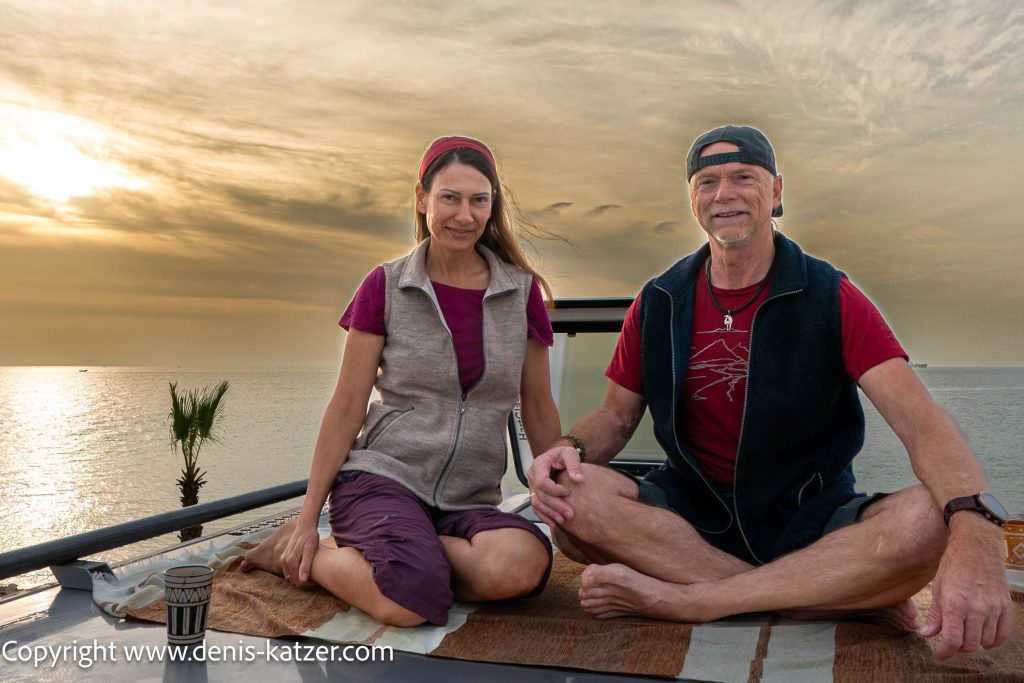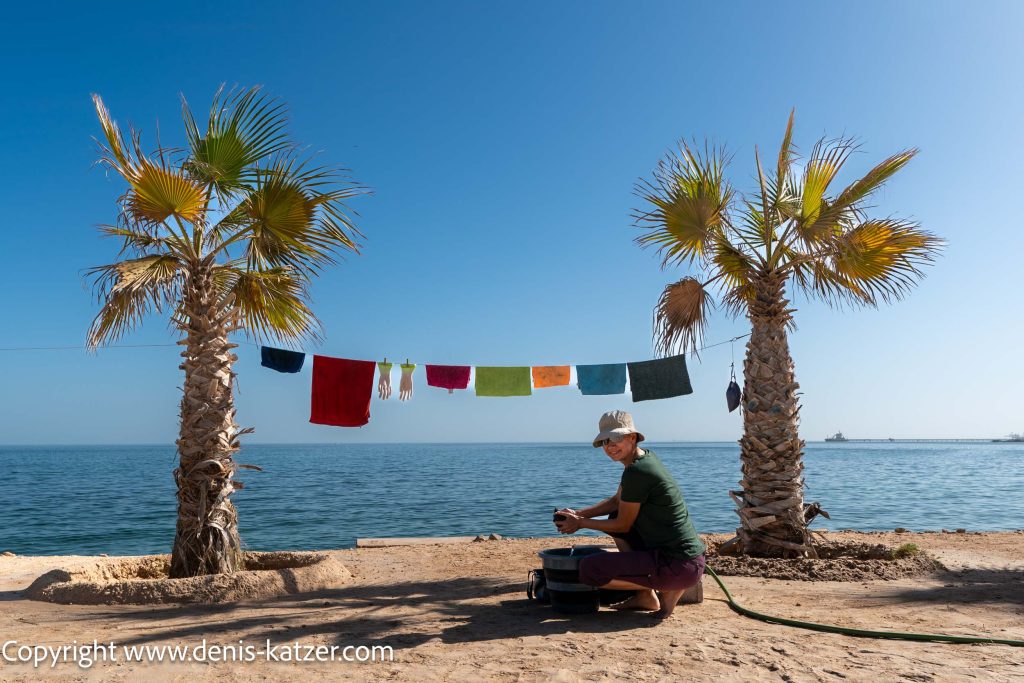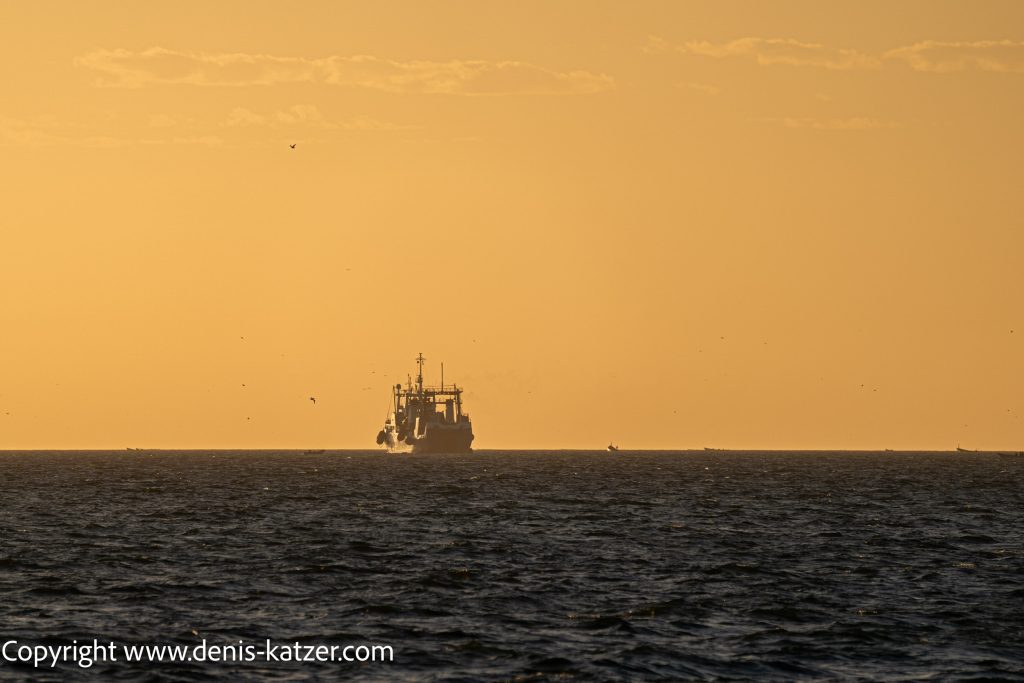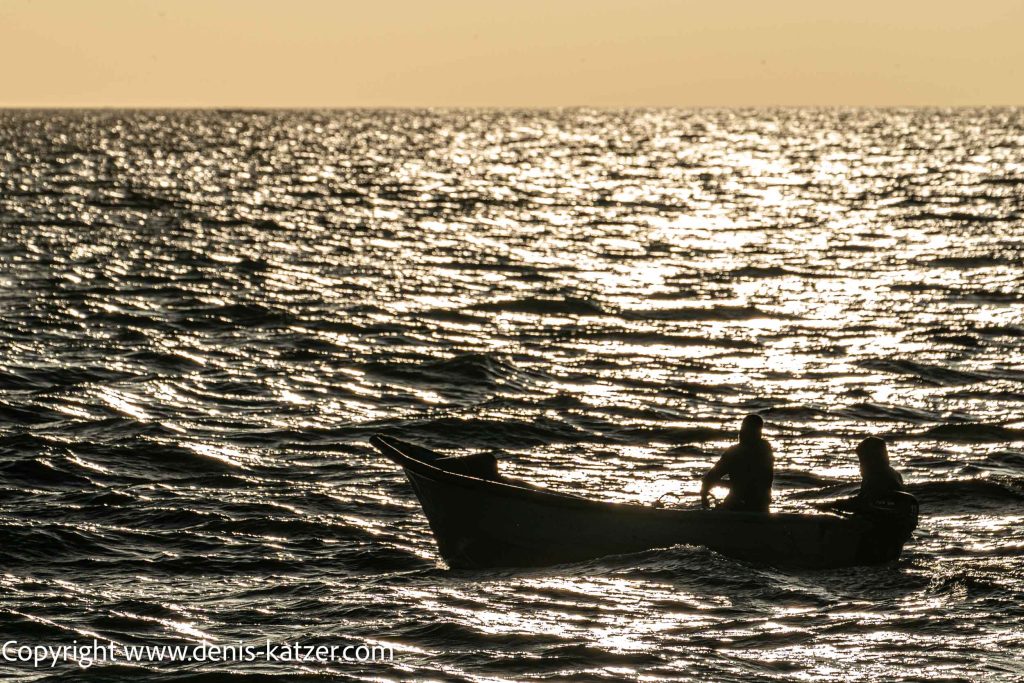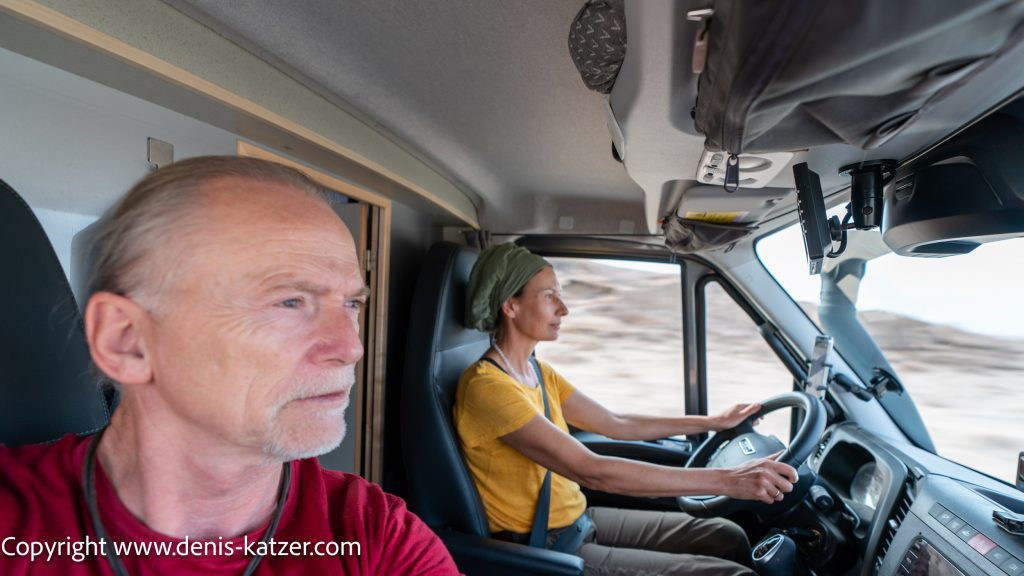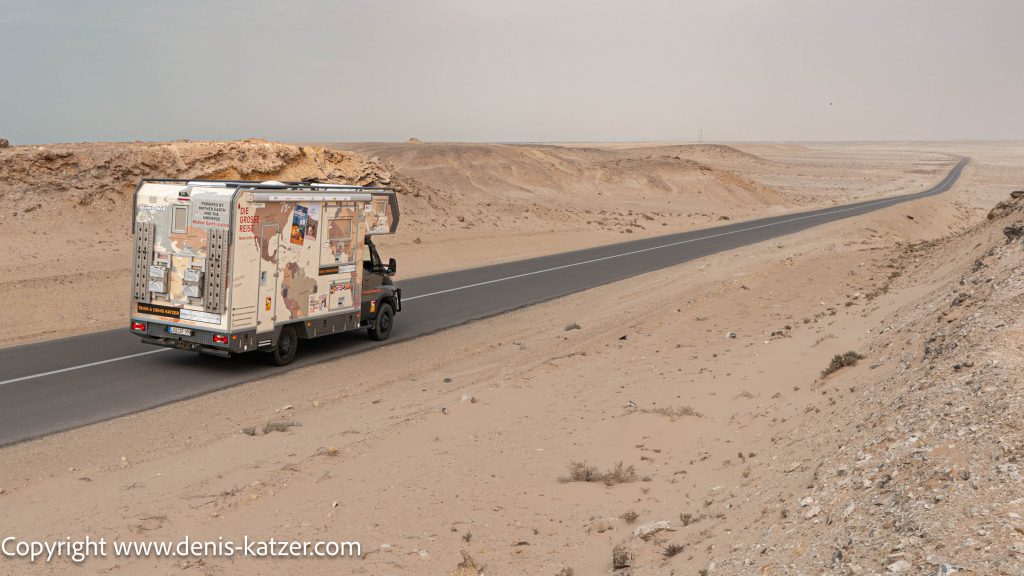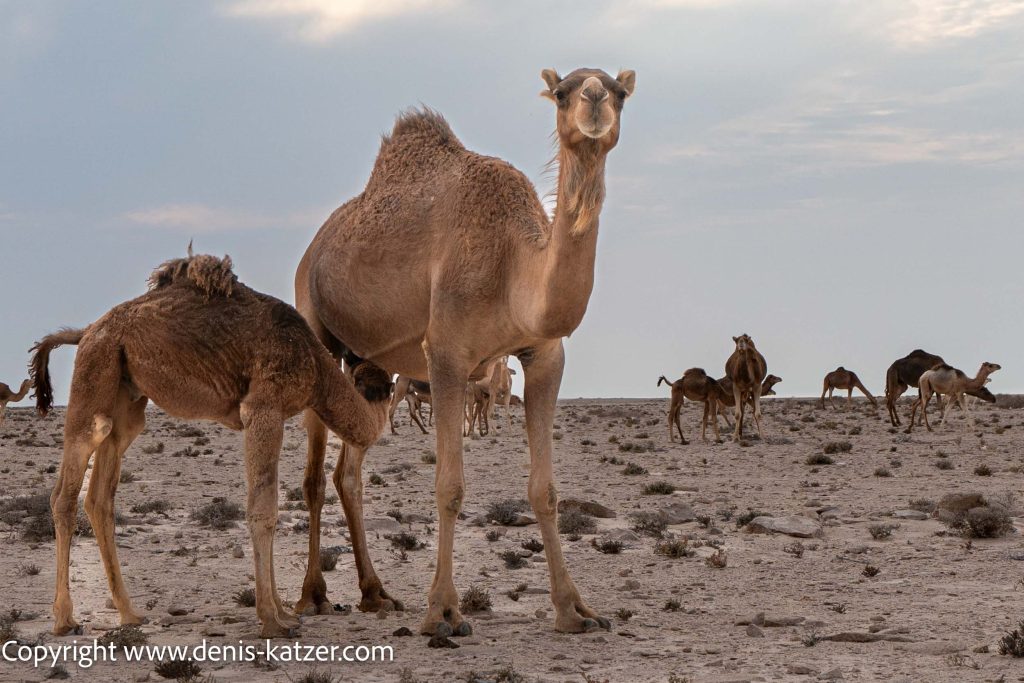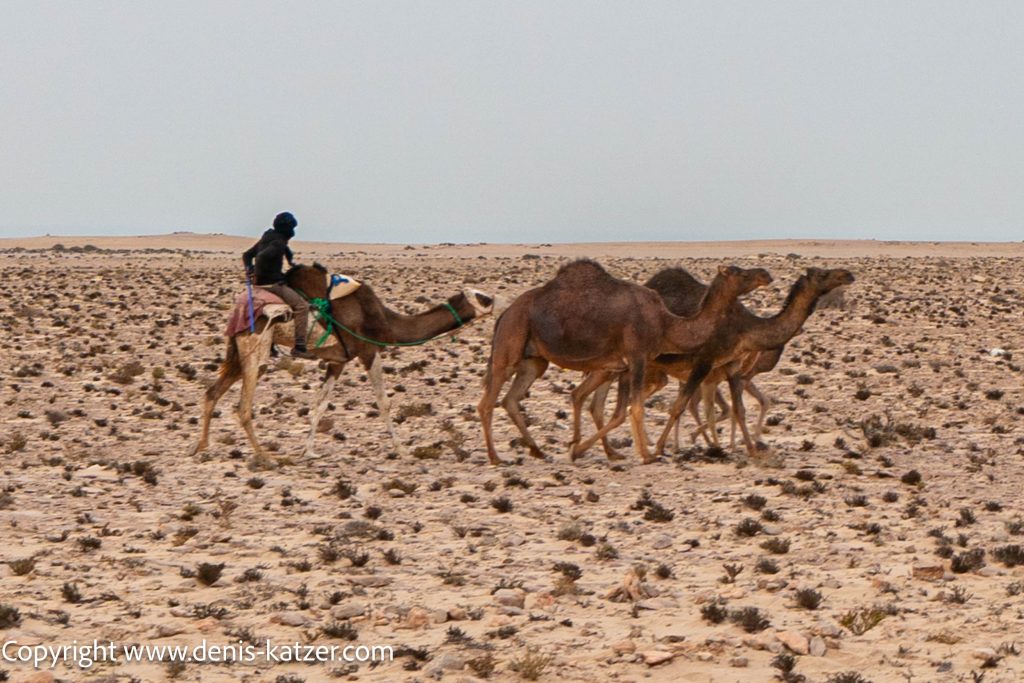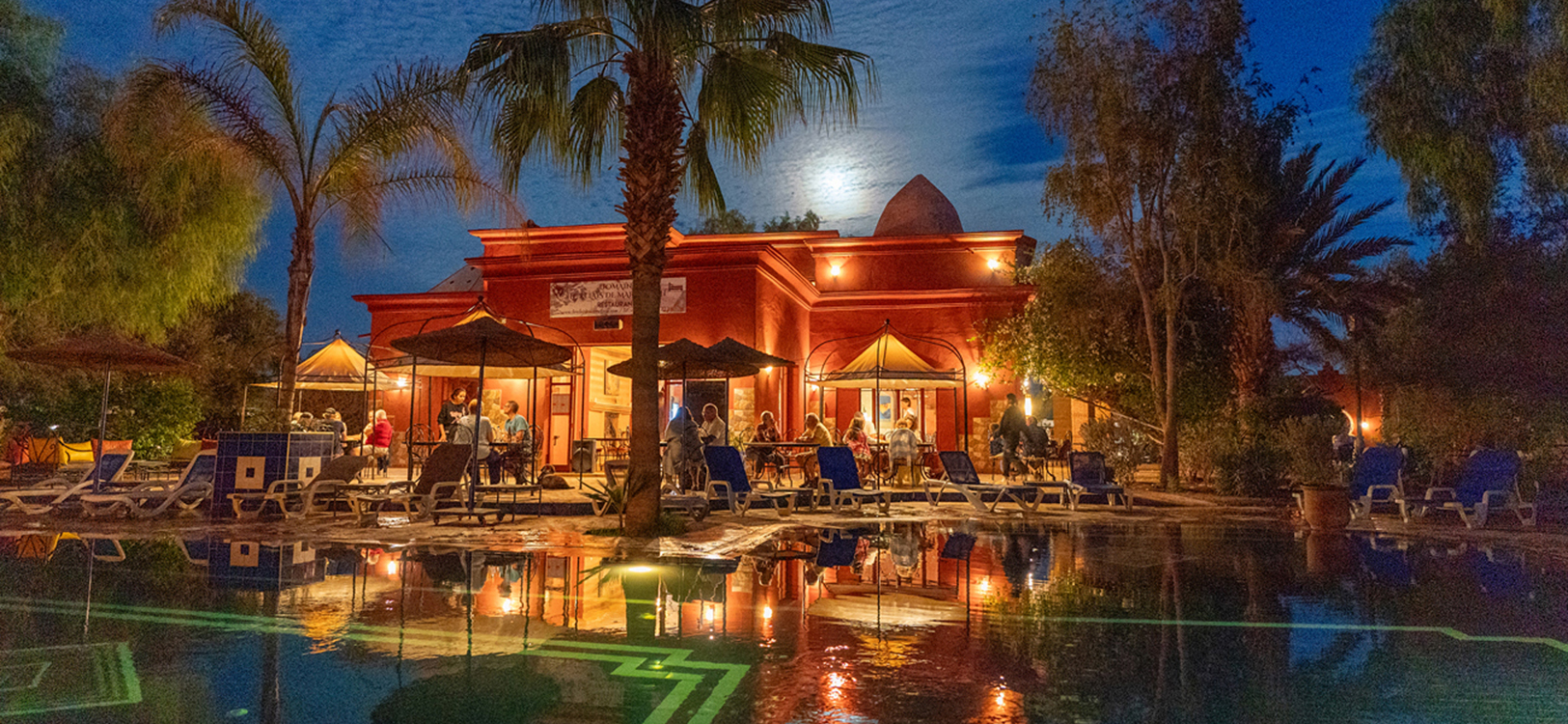
On the road again for almost 14 months and in Mauritania for two weeks.
N 23°54'05.0" W 015°47'14.1"
Day: 386 – 409
Camp 72 and 73
Country: Mauritania / Morocco
Location: Villa Maguela / Daklah pitch
Latitude N: 23°54’05.0″
Longitude W: 015°47’14.1″
Daily kilometers: 420 km
Total kilometers: 10,557 km
Height: 5 meters
Temperature day max: 22°
Night temperature: 17 °
Departure: 9:00 am
Arrival: 19:00
Travel time: 10 hrs.
We have now been on the road again for almost 14 months and have been in Mauritania for two weeks. We have spent the last few days here at Villa Maguela. Villa Maguela is located on the Atlantic coast near the town of Nouadhibou, about 60 km from the Mauritanian-Moroccan border. It is a wonderful place of exchange where overlanders from all over the world share exciting and often fascinating stories about Africa.
As Villa Maguela does not yet offer Wi-Fi and we are reliant on it to update our videos and social networks, we return to our quirky pitch where we have already spent a week. See our last video with the title “SKURRILSTER CAMPINGPLATZ”
In the distance, we see a large column of smoke that we had already noticed two weeks ago. Obviously, waste from the city of Nouadhibou is piled up here and burned in an uncontrolled manner without any protective measures. Due to the limited resources and relatively poor infrastructure in many parts of the country, there is often a lack of adequate facilities for waste disposal and incineration. Although there are waste incineration plants in some urban areas, particularly in the capital Nouakchott, they do not meet international standards and are not sufficient to deal with all the waste produced. This leads to uncontrolled burning of waste in both urban and rural areas. The consequences are serious for the environment and the health of the people living here, as toxic gases and particles are released that pollute the air, soil and water. Not only uncontrolled waste incineration is a problem, but also the pollution of water sources, particularly through inadequate wastewater disposal and agricultural practices. Another challenge is the increasing pollution caused by plastic waste, which affects landscapes and coastal regions. This not only affects the aesthetics of the environment, but also has a negative impact on wildlife, especially marine life. Given its position as one of the poorest countries in the world, Mauritania can hardly afford to protect the environment, as this is a costly undertaking and a waste incineration plant alone can cost millions to tens of millions of euros for a small town.
When we travel, we often experience not only the beautiful sides of a country, but also the less pleasant aspects. It is important to us to report objectively on our travels as far as we can, and therefore such topics are simply part of it, even if they may be unpleasant for some and would rather not be seen. Nevertheless, it’s not all evening yet. However, based on what we have heard, the Mauritanian government is taking various measures to protect the environment, including legislation, international cooperation and education campaigns. It establishes nature reserves, improves water management and monitors environmental pollution. Despite limited resources and ongoing challenges such as water scarcity and economic instability, Mauritania remains committed to protecting its environment. Finally, it is important to mention that many countries are now investing in Mauritania: Among them China, France, Spain, Germany and some other countries. And who knows, perhaps Mauritania will overtake one or two other European countries in the near future. The country is home to one of the largest iron ore mines in the world and has considerable deposits of copper, gold, diamonds and other minerals. In addition, the seemingly endless desert offers considerable potential for renewable energies, especially wind and solar energy.
When we return to our secluded pitch, we come across a worrying problem: “Water is getting into the cabin!” Tanja exclaims in horror. We excitedly inspect the Terra Love and finally discover the cause: the fresh water filler hose has broken in a hard-to-reach place. “This means that some of the water that flows in during filling is distributed on the cabin floor,” I say.
After a month in Mauritania, we enjoy our last evening in this interesting desert country on the roof of our Terra Love. We watch the slowly setting ball of the sun, the fishing boats passing by at this hour, listen to the whisper of the wind and the sound of the waves.
In the morning we leave one of the most bizarre campsites of recent months. There were neither showers nor dry toilets here, instead they were always under water. Millions of flies and incessant sandstorms made it impossible for us to spend any length of time outside. And then one day, something incredible happened. Behind our Terra Love, a dog was placed on the grill to be eaten. This is certainly a place we will never forget.
The guard, who lives day and night in a tiny hut, opens the iron gate for us. He says goodbye with friendly gestures. “Have a good trip. I hope to see you again!” he calls out to us.
Once again we drive through the second largest city in Mauritania, Nouadhibou, which is home to the country’s largest port and acts as an economic center. When we arrived here a month ago, the traffic seemed absolutely chaotic and we prayed that we would get through safely without an accident. In the meantime, we have become a little accustomed to the Mauritanians’ driving style, who seem to break every traffic rule or, if they have ever heard of them, simply ignore them completely.
Desert of deserts
It’s strange how quickly we humans get used to our surroundings. Even the poverty that shocked us at first no longer seems quite so bad. One thing, however, continues to excite our minds, namely the fact that there are said to be hundreds of thousands of slaves in this country. People who have been enslaved for generations, and even the children of slaves suffer a fate that is so incomprehensible to us Europeans that we find it hard to cope with this reality. At this point, we can only hope and pray that this outrageous injustice will soon come to an end, because even if you are poor, everyone on this beautiful planet should be able to live without coercion and oppression.
Just a few hundred meters behind the town, the Sahara welcomes us again. Also known as the “desert of deserts”. This term reflects the extraordinary size, aridity and extreme environmental conditions of the Sahara. It is the largest hot desert in the world and stretches across large parts of North Africa, including Algeria, Tunisia, Libya, Egypt, Sudan, Chad, Nigeria and Mauritania. The term “desert of deserts” makes it clear that the Sahara is not just one desert among many, but a desert of unprecedented size and extent. Its landscapes are characterized by huge sand dunes, stony plains, dry riverbeds and rocky mountains. The extreme climatic conditions, such as extreme heat during the day and cold at night, as well as the lack of surface water, make survival in the Sahara extremely challenging.
We are slowly approaching the Mauritanian border again, where there are one or two stories about reports of corruption. Poverty and low incomes allegedly drive civil servants to earn extra money. As explained when we entered the country, a lack of transparency in government and finance facilitates corruption, while personal relationships often determine performance when filling positions and awarding contracts. Mauritania has taken measures against corruption, including anti-corruption laws and improvements in transparency. International organizations such as the United Nations and the World Bank support these efforts. When we entered the country a month ago, an official wanted 10 euros for the vehicle import document. I suspected that he wanted to use it to supplement his salary, so I refused to pay and received the important paper anyway. That was the only attempt to get money from us during all the checks. We are curious to see whether the departure will go just as smoothly. The friendly border official asks for our passports and, after checking them, tells us to drive a few meters further. We have to stop there and are approached by various fixers who offer us their services for €20. However, as we know where we can get the necessary stamps to leave the country, we politely decline. It takes less than half an hour before we leave the Mauritanian border behind us.
No man’s land
As mentioned in our video about entering the country, Morocco and Mauritania have experienced several conflicts and tensions in their shared history. A major conflict occurred in 1975 over the Western Sahara, a territory claimed by both countries. This conflict resulted in the no man’s land we are currently driving through. It is essentially a demilitarized zone that lies between the two countries and serves as a buffer zone to prevent further conflict. The no man’s land is symbolic of the complex geopolitical tensions and conflicts in the region and remains an important aspect of the efforts to find a peaceful solution to the Western Sahara conflict. After a few kilometers on a potholed gravel road, a narrow strip of asphalt makes it easier for us to continue. Even if the desert around us looks peaceful, appearances are deceptive, as it is suspected that there could be mines along the road. It is therefore advisable not to take breaks to walk in the desert.
Crossing the Moroccan border is also relatively quick and smooth. It feels good to be back in Morocco, almost like being at home. Is it because we’ve already spent half a year here?
The desert journey from the city of Tan-Tan to Mauritania was originally a journey into the unknown. We had heard that Morocco had invested a lot of money in modernizing the route through the Western Sahara, but we didn’t know how far the construction work had progressed. We wondered how long it would take us to cover the almost 1,200 kilometers, especially if we could only drive at walking pace for parts of it. In the end, we racked our brains for nothing, because as we now know, the road is almost perfect and paved throughout. At the same time, however, we are aware that getting stuck in such a region could be extremely problematic. Who should I contact in the event of engine damage? There is certainly no towing service here, and even if there were, how would you find out its address? And even if you have the telephone number of a workshop far away, what use is it if you don’t speak French? How should we communicate then? Time and again we see vehicles that are in a visibly poor technical condition. Do the drivers even think about the fact that they could break down here in the desert? Who knows, probably not, because most of them reach their destination without incident. For us, the question is whether we allow ourselves to be stopped too much by our own fears, whether we give them too much space. What is certain is that we will never know what lies beyond the horizon if we humans allow ourselves to be stopped before the adventure even begins.
After 420 kilometers we reach the campsite near Daklah, where we had already spent a few days on the way to Mauritania. This time we will also stay for a few days to make our updates and edit another video.
Watch the video and let yourself be whisked away to another world.
Here is the link to the video:
